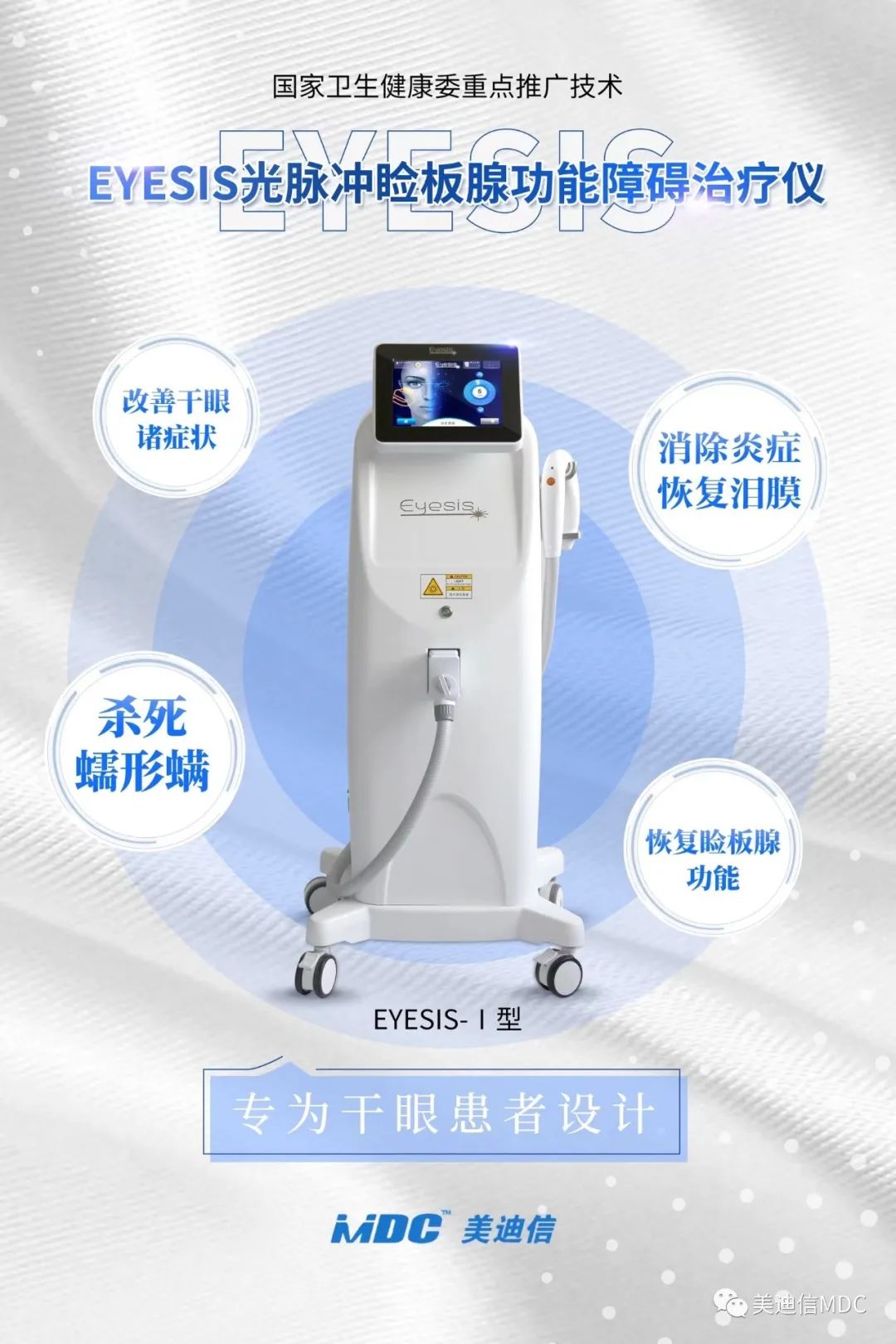Indirect Application of IPL Induces Therapeutic Effects on Murine MGD
Break News
After nearly two years of clinical use, Professor Yan Xiaoming's team from the First Hospital of Peking University further studied the mechanism of EYESIS light pulse MOPT meibomian gland dysfunction therapeutic instrument, analyzed the major findings of EYESIS in treating meibomian gland related diseases through multiple ways, and published them in Frontiers in Medicine (IF: 4.468) in June 2022, The following is a comprehensive interpretation of the article Indirect Application of Intense Pulsed Light Induces Therapeutic Effects on Experimental Murine Meicomian Gland Dysfunction.

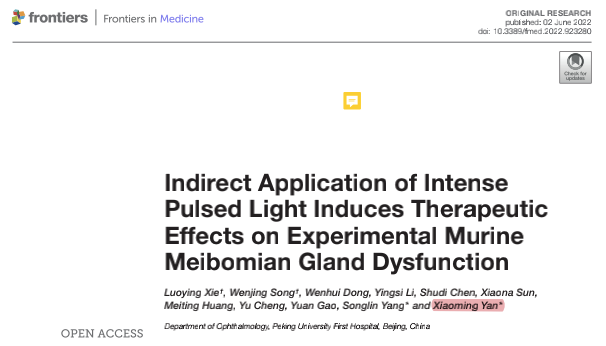
Purpose:
To study the indirect effects of intense pulsed light (IPL) on the morphological and pathological changes of meibomian glands (MGs) in apolipoprotein E knockout mice (ApoE -/-), and to explore the mechanism of IPL.
Methods:
The model of random control was used to treat (ApoE -/-) mice with no treatment and three times of IPL irradiation. The related indexes, gene and protein expression of upper eyelid MGs were detected by morphological analysis, eye surface staining, electron microscopic analysis, immune staining, Western blot and qRT PCR.
In this paper, the EYESIS light pulse MGD therapeutic instrument developed and produced by MDC MEDICINE Company is used for experimental research. The intensity of IPL treatment is 12 J/cm2. Three treatments are conducted on both sides every two weeks, with one pulse each time. IPL treatment was applied to the skin 3 mm from the lower eyelid lid edge, and the irradiation area was 1 square centimeter of the mouse face.
The experimental results are divided into six parts to show the clinical mechanism of IPL
1、 Changes of eyelid margin and ocular surface after intense pulsed light treatment:
After three times of EYESIS treatment, the morphology of the eyelid margin, the degree of obstruction of the gland mouth, the score of the meibomian gland, the ocular surface staining and the score of the mice have been improved accordingly.
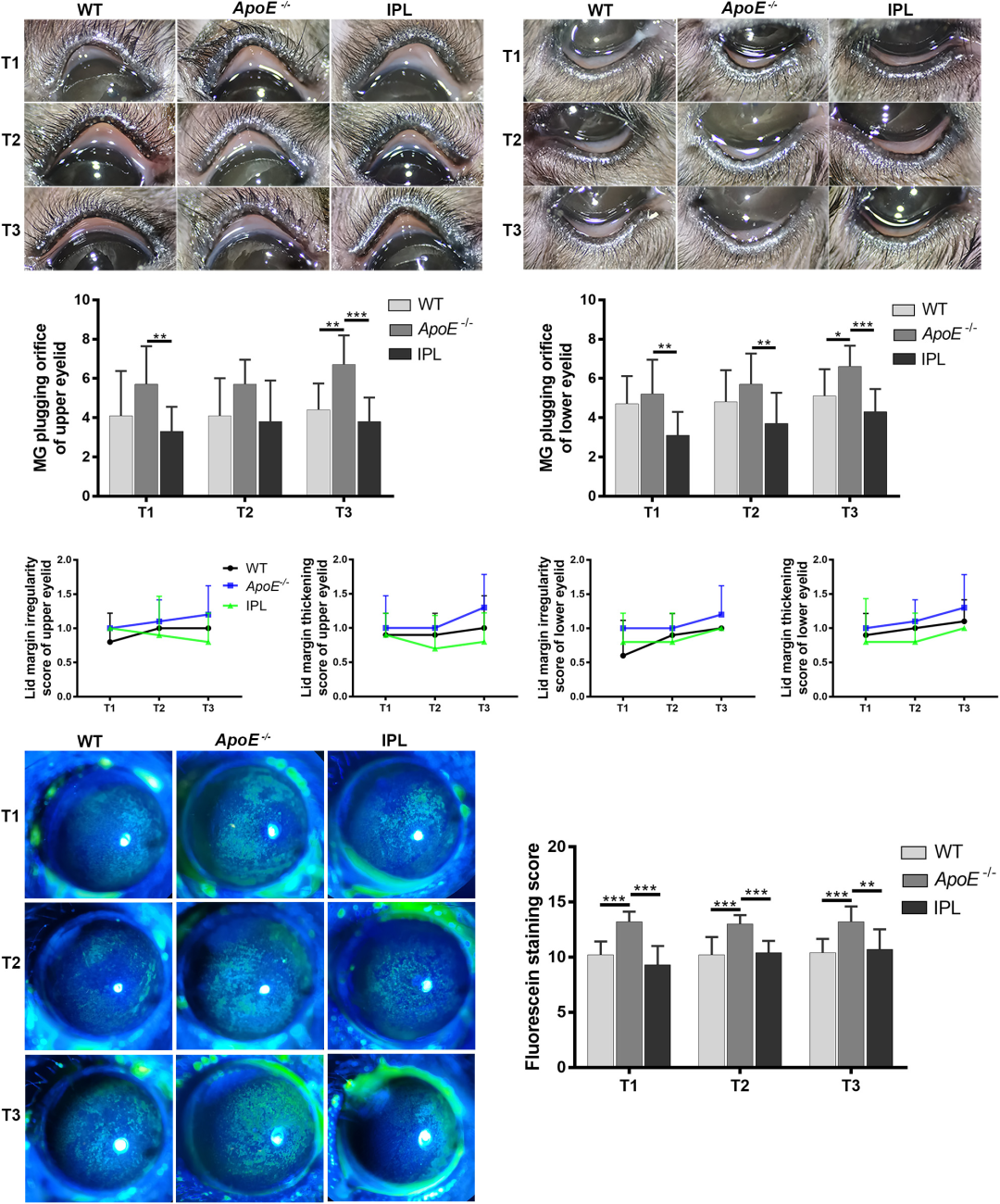
2、 Intense pulsed light improves the obstruction of meibomian gland mouth and the morphology of meibomian gland:
After IPL treatment, the gland mouth blocked by meibomian gland reopened and the gland swelling decreased. To further confirm, the histological observation after H&E staining showed that the blocked orifice reopened after IPL treatment.
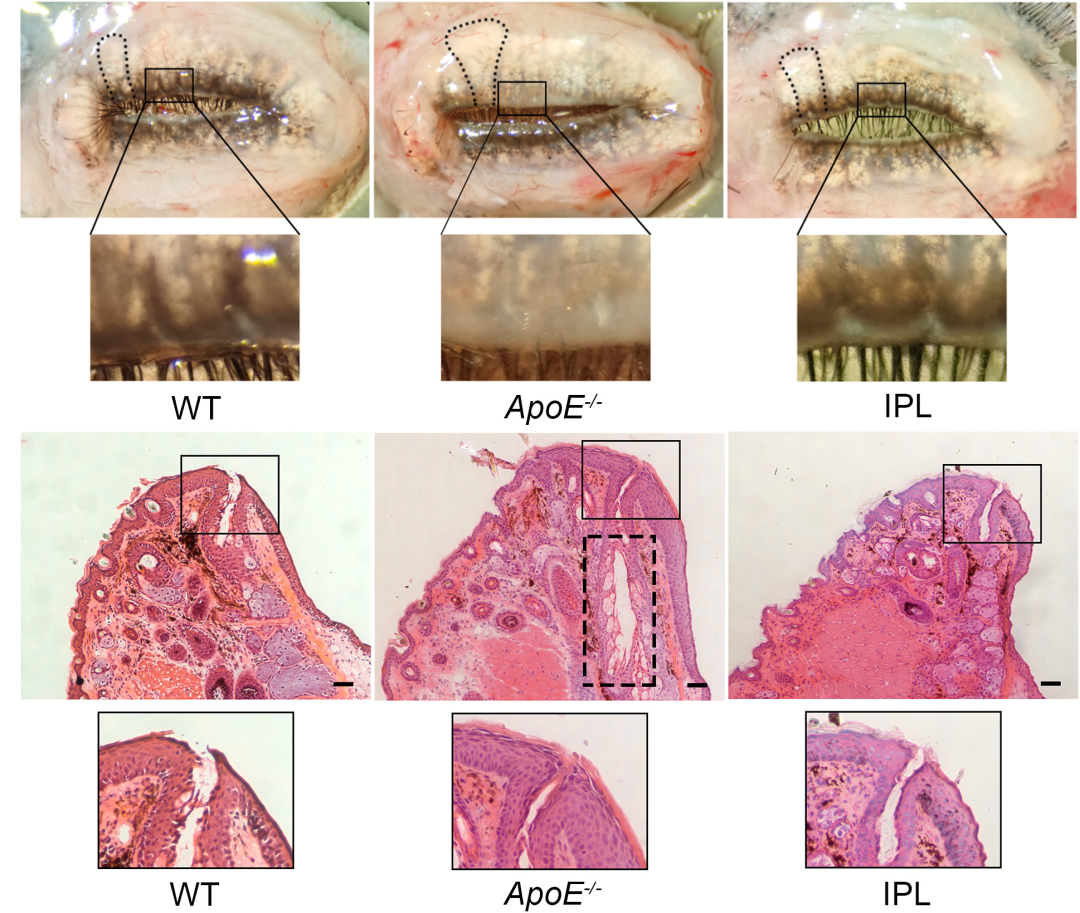
3、 Effects of intense pulsed light on lipid accumulation and mitochondrial ultrastructure in meibomian gland:
As shown in the figure, ORO staining was used to observe the changes of lipid accumulation after IPL treatment. After treatment, more hyperchromatic lipids accumulate in the acini. Under the transmission electron microscope, it was found that the cytoplasm of ApoE -/- mouse acinar cells contained a large amount of irregularly shaped and enlarged lipids. Compared with the mitochondria of ApoE -/- mice, the mitochondria in IPL treatment group were less damaged and arranged regularly.
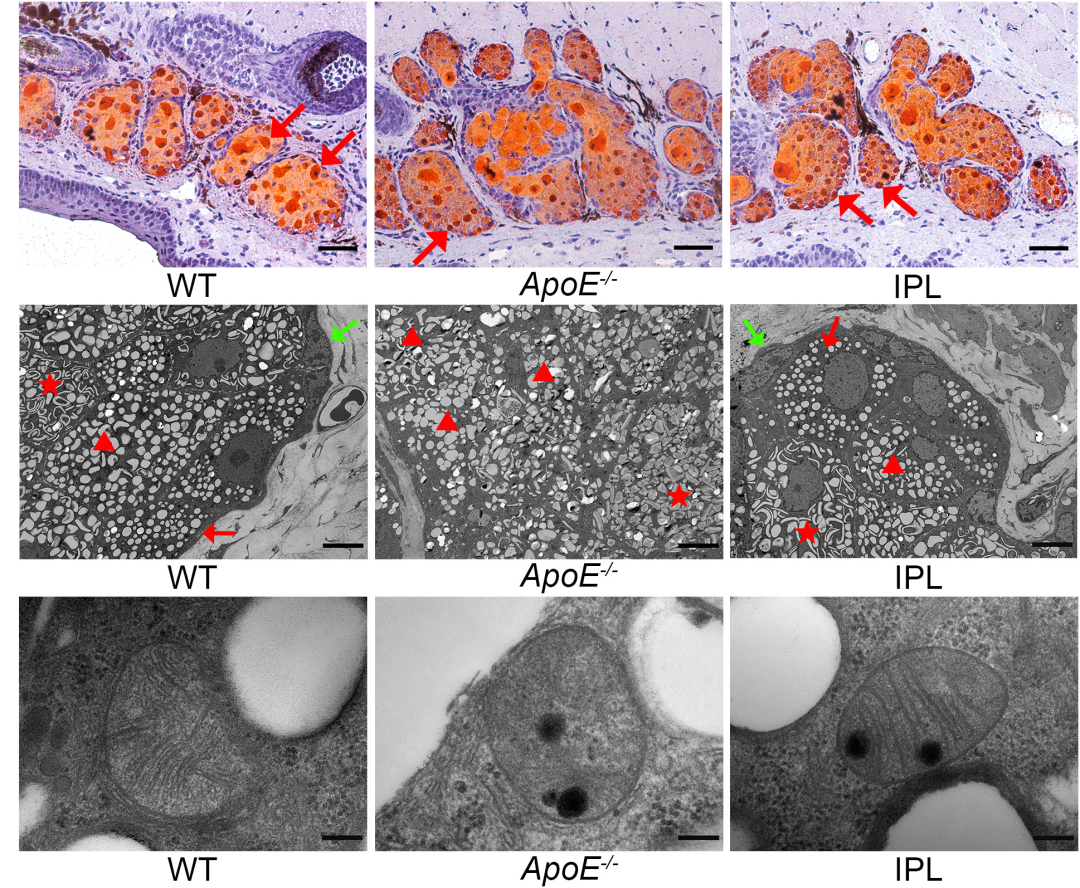
4、 Intense pulsed light reduces the level of proinflammatory cytokines and down regulates NF- κ B signal path:
The results show that IPL treatment can reduce the level of inflammatory factors (TNF- α、 IL-17A and IL-6), partly by making NF- κ B way is inactivated.
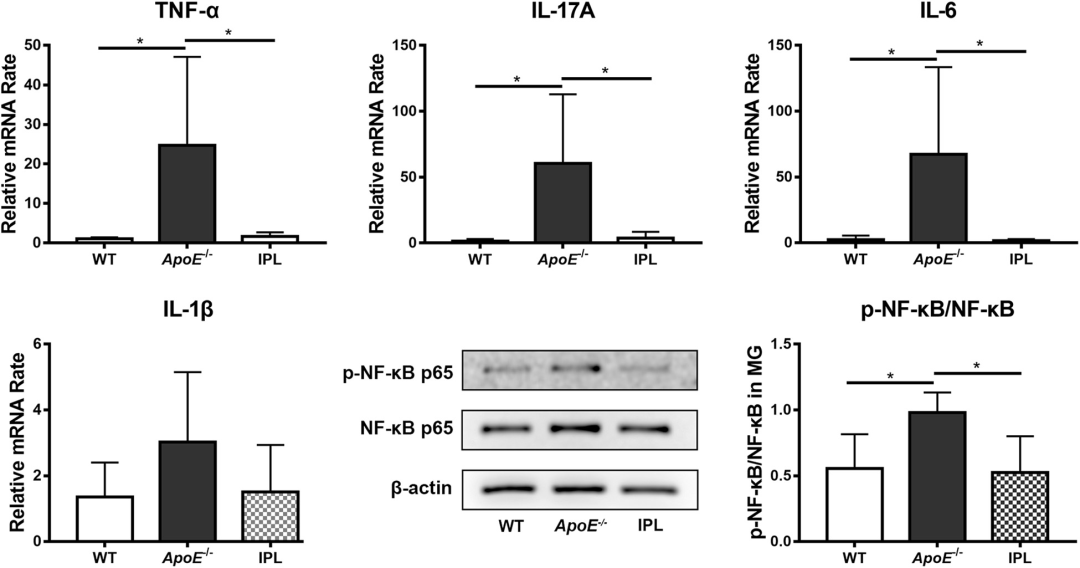
5、 Intense pulsed light can increase the proliferation of acinar basal cells and reduce excessive keratinization immunostaining of ductal epithelium:
The results showed that the number of Ki67 positive cells in the acinar basal layer of ApoE -/- mice decreased significantly, while after IPL treatment, the number of Ki67 positive cells increased, and they were sparsely arranged at the edge of acinar.
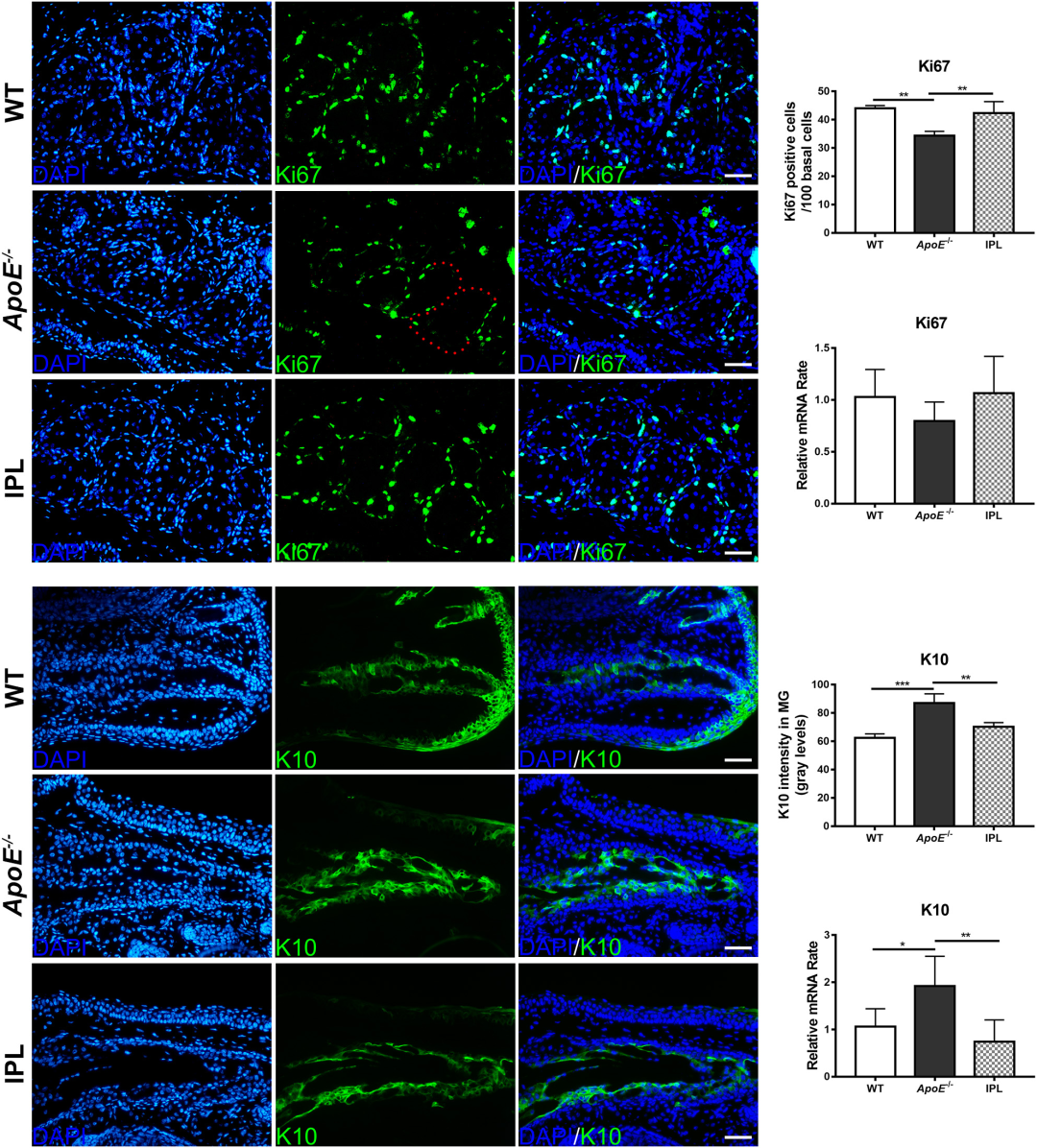
6、 Effects of intense pulsed light on oxidative stress and apoptosis of meibomian gland:
Compared with ApoE -/- mice, the NOX-4 nuclear staining of mouse acinar epithelial cells treated with IPL was reduced, which was roughly the same as that of WT mice. In addition, IPL decreased Caspase-3 (apoptotic cell marker) in MGs.
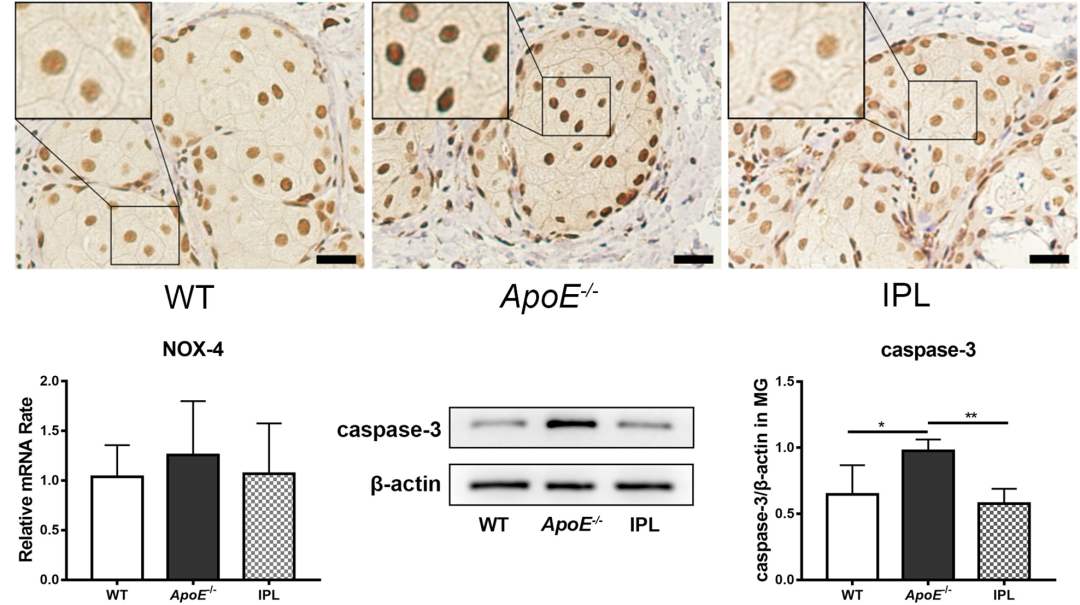
Results:
In conclusion, the light pulse effect of EYESIS can improve the structure and function of MGs and alleviate the development of MGD, which may be related to the indirect effect of photobiological regulation (PBM).
Secondly, the author reveals the deeper mechanism of strong pulsed light IPL in the article, as shown in the figure:
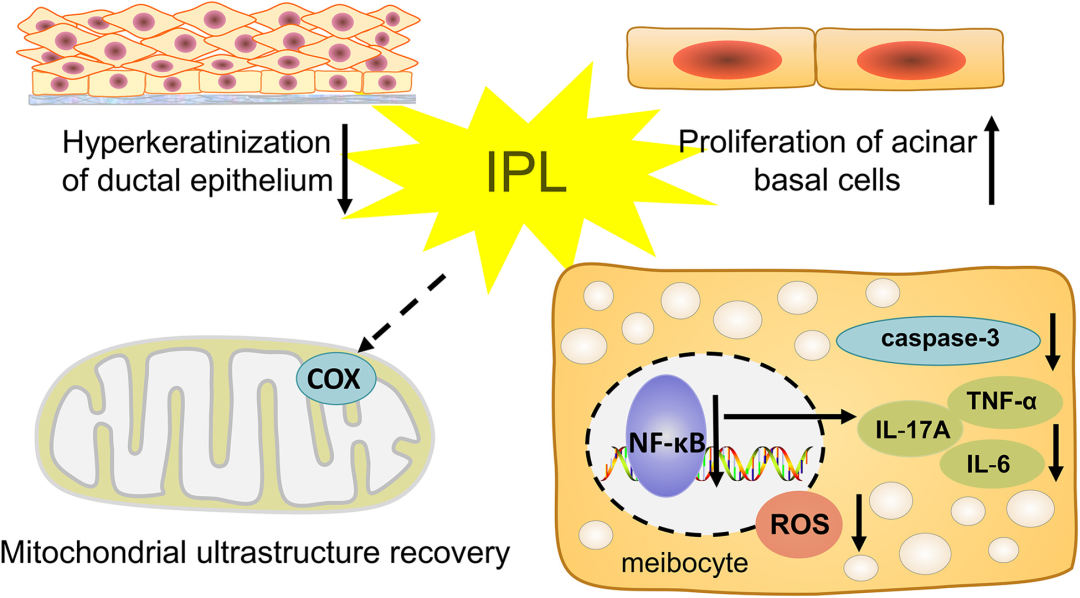
IPL under intense pulsed light can not only inhibit the hyperkeratosis of tarsal gland duct epithelium and increase the proliferation of acinar basal cells, but also, more importantly, IPL can indirectly restore the ultrastructure of mitochondria in cells by irradiating eyelid tissue cells, and down regulate NF- κ B to reduce the level of inflammatory factors and achieve the purpose of treating MGD.
It is worth noting that the article also mentioned the feedback on the IPL irradiation position of intense pulsed light. In the study of Peking University First Hospital, EYESIS only irradiated the skin below the lower eyelid, that is, the treatment effect was observed on both the upper and lower eyelids. These observations are consistent with the clinical treatment effect of MGD patients (below).
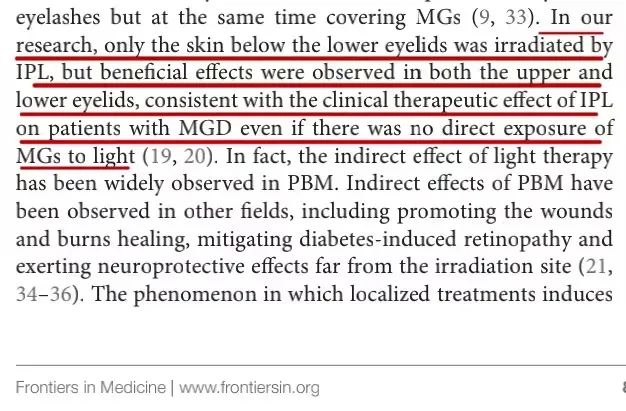
Of course, the benefit of these light pulses may be related to the indirect effect of photobiomodulation (PBM). The spectrum of IPL includes red to near-infrared spectrum. Although PBM can increase the content of ROS under normal conditions, delivering PBM to cells already under oxidative stress can induce the reduction of ROS concentration and inhibit apoptosis.
Given the spectral characteristics of IPL, we assume that photons from IPL may be absorbed by cytochrome C oxidase (COX). This process can increase ATP production and change the level of ROS. This provides strong evidence for the future research on the mechanism of IPL, and also provides a more in-depth analysis of the mechanism of IPL to improve MGD.

